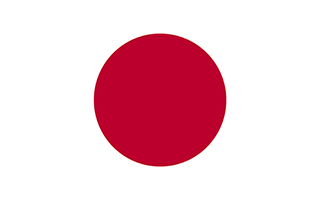Facts and Data
Webpages:
Official Unesco Page
View photos from OUR PLACE the World Heritage collection
Protectedplanet.net
Basis Data:
Unesco World heritage since: 1993
Size of heritage: 10,747 ha
Coordinates:
Longitude: 130,533°
Latitude: 30,333°
Summary
Located in the interior of Yaku Island, at the meeting-point of the palaearctic and oriental biotic regions, Yakushima exhibits a rich flora, with some 1,900 species and subspecies, including ancient specimens of the sugi (Japanese cedar). It also contains a remnant of a warm-temperate ancient forest that is unique in this region.
Location on Map
Show bigger map on Openstreetmap
Yakushima: A Natural Wonder in Japan
Yakushima, located in Kamiyaku-cho and Yaku-cho, Kumage-gun Kagoshima Prefecture, is a UNESCO World Heritage site renowned for its exceptional natural beauty and unique ecosystem. This enchanting island, situated in the southern part of Japan, has a rich history and is home to a diverse range of flora and fauna.
History
The history of Yakushima dates back thousands of years. The island has been inhabited since the Jomon period, around 10,000 BCE, as evidenced by the discovery of ancient remains and artifacts. Over the centuries, Yakushima has been a source of inspiration for poets, artists, and writers, who have been captivated by its mystical charm.
In 1993, Yakushima was designated as a UNESCO World Heritage site due to its outstanding universal value. This recognition was primarily based on the island's ancient cedar forests, which are estimated to be over 1,000 years old. These forests have remained virtually untouched by human intervention, providing a glimpse into the primeval landscapes that once covered much of Japan.
Current State
Yakushima's current state is a testament to the island's commitment to preserving its natural heritage. The local government, along with various organizations and individuals, has implemented strict conservation measures to protect the island's unique ecosystem.
The ancient cedar forests, known as Yakusugi, are the crown jewel of Yakushima. These majestic trees, some of which are estimated to be over 7,000 years old, create a surreal and awe-inspiring atmosphere. Visitors can explore the forest through well-maintained hiking trails, allowing them to immerse themselves in the tranquility and grandeur of nature.
Yakushima is also home to an array of wildlife, including the Yakushika, a subspecies of the Japanese deer. These gentle creatures roam freely in the forests, adding to the island's natural charm. Additionally, Yakushima's coastal areas are teeming with marine life, making it a popular destination for diving and snorkeling enthusiasts.
Efforts to preserve Yakushima's natural beauty extend beyond its forests and wildlife. The island's pristine rivers and waterfalls, such as Oko-no-taki and Senpiro-no-taki, offer breathtaking views and serve as a vital water source for the ecosystem. The local community has implemented measures to ensure the protection of these water resources, including strict regulations on waste management and sustainable tourism practices.
Yakushima's commitment to sustainable tourism is evident in its infrastructure and visitor management. The island provides well-maintained facilities, including campsites and lodges, to accommodate tourists while minimizing their impact on the environment. Visitors are encouraged to follow designated trails, refrain from littering, and respect the island's delicate ecosystem.
In conclusion, Yakushima is a UNESCO World Heritage site that showcases the beauty and importance of preserving our natural heritage. With its ancient cedar forests, diverse wildlife, and pristine water resources, this enchanting island continues to captivate visitors from around the world. Yakushima serves as a shining example of how humans can coexist harmoniously with nature, ensuring its preservation for future generations.









